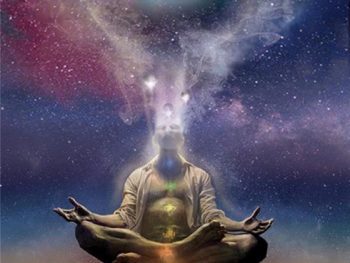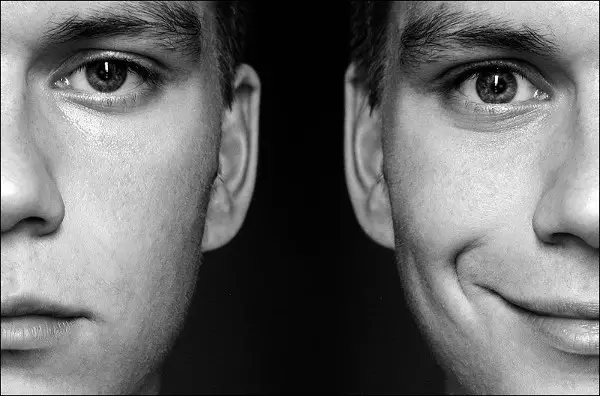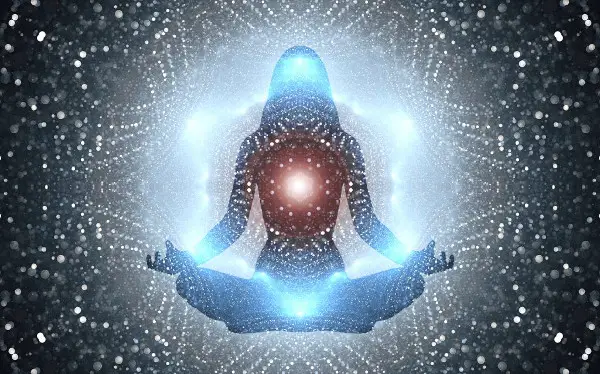 By Mateo Sol
By Mateo Sol
Guest writer for Wake Up World
Entering the trance state is ancient and primal.
For thousands of years, humanity has utilized various techniques to enter altered states of consciousness which open a door into the ‘spirit realm.’
From our shamanic ancestors to the indigenous traditions found on every continent, trance states are bridges to the unconscious and the earthy hidden realms of our souls.
These days, even mainstream religions such as Christianity, Islam, Buddhism, and Hinduism make use of subtly induced trance states to assist the faithful in feeling more connected with the Divine.
[pro_ad_display_adzone id=”110028″]
No matter what your spiritual beliefs or practices look like, the trance state is a vital tool which you need to think about using. I’ll explain why soon.
What is a Trance State?
A trance state is an altered form of consciousness in which a person is neither fully awake nor fully asleep. In essence, the trance state involves walking between the world of the conscious and subconscious mind. Trance states are sometimes referred to as “zoning out,” “being off with the fairies,” “out of it,” and even “day-dreaming.”
The Five Levels of Altered States of Consciousness
You might be wondering, “how deep in trance do I need to go to do psychological or spiritual work?” I’ll answer that question soon.
But first, it’s important that you get a brief summary and overview of the five levels of trance. See how many you’ve experienced recently:
Level 1 – Very Light Trance
This stage involves becoming more self-aware of your inner workings. For example, in a light trance, you may become more conscious of your thoughts, physical sensations, and emotions. Those who practice mindful meditation often experience very light trance states.
Level 2 – Light Trance
This stage is characterized by a dreamlike state of consciousness. A person experiencing light trance may get lost in daydreams or fantasies. Those who get absorbed watching TV, reading a book or driving a car without remembering the trip have all experienced light trance.
Level 3 – Medium Trance
This stage is characterized by feelings of being “in the zone” – also known as the flow state. In this state of consciousness, it is common to lose awareness of one’s surrounding, the time, and even one’s body.
Level 4 – Deep Trance
This stage occurs when we fall into hypnagogic and regular sleep states. You can read more about hypnagogia here, but to summarize: this strange and fleeting state of consciousness occurs just before we go to sleep and our conscious minds wind down. It is common to see strange visuals, wacky stories unfold in our minds, and even experience auditory or tactile hallucinations.
Level 5 – Very Deep Trance
This stage is defined by complete loss of consciousness – such as those we experience during deep dreamless sleep or in a comatose state.
Of all the trance levels listed above, the best for creating psychological and spiritual change are the light to deep trance states.
Trance States and Deep Psychospiritual Work
You might be wondering how trance states help create psychospiritual (a word that means psychological + spiritual) change.
The answer is simple: entering a trance state helps us to bypass the critical mind which interferes with deep inner transformation, and communicate directly with the unconscious mind.
Why does the critical mind interfere with our psychospiritual work? The answer is that the rational mind is a barrier to the irrational mind (or unconscious mind) – and the unconscious is where the majority of our pain, neurosis, and unresolved trauma is buried.
Naturally, the role of the ego is to protect us from perceived threats, but often its defensiveness and stubbornness prevent us from shaking off old toxic roles, adopting new habits, and releasing pent-up pain. You can think of the ego – or rational mind – as the soldier who is eternally on guard. Our egos – like soldiers – have a number of weapons that keep us locked in certain roles and modes of living that are believed to be ‘safe.’ These weapons are called defense mechanisms. Common examples of defense mechanisms that our egos use to keep us “safe” include denial, projection, splitting, and repression.
The only problem is that what our ego perceives to be “safe” actually provides us with superficial comfort and the unsatisfactory ability to function as socially acceptable citizens. What the ego doesn’t understand is that everything that has been buried, avoided or rejected hasn’t been successfully evaded just because it has been hidden. Whatever is buried within us grows. Like a seed, all the fear, trauma, and pain we carry sprouts and blossoms into a monstrous plant within the fertile earth of our unconscious minds. We cannot escape what has been repressed within us. Eventually, the “monsters” of the deep will burst into our conscious awareness and will continue to do so until we face them.
Entering trance states is one powerful way to explore, embrace, and heal certain parts of ourselves that our egos have prevented us from exploring or facing.
What about spiritual work?
Perhaps more popularly, trance has been used for millennia for spiritual purposes such as contacting spirit guides, seeking animal allies, communing with ancestors, and communing with one’s own Soul.
How is this the case?
There are many explanations out there which detail how trance states “open a door” to the other side of reality. I won’t explore the myriad of theories out there, but the one that is the most believable and accurate to me is that our unconscious minds are connected to the greater web of the Collective Unconscious – a term coined by famous psychologist Carl Jung.
The Collective Unconscious, also known as the Universal or Deep Mind, contains the energetic blueprint experienced by all of life. Within the Collective Unconscious live the archetypes, known by the ancients as the “Gods and Goddesses” of old. All I can attest to from my own shamanic experiences of journeying into the Collective Unconscious is that our Souls live in or emerge from this primordial space.
Whatever the explanation is, it’s undeniable that trance helps us access deeper states of awareness and even undergo mystical experiences that have a life-changing effect.
9 Ways to Enter a Trance State
The trance techniques explored below will lead you through the light to potentially deep trance states. How you decide to use these approaches is completely up to you. If, however, you have a history of schizophrenia, schizoaffective disorder, or any form of severe mental illness, please consult a medical professional before trying these techniques.
In no particular order, I will briefly outline each practice:
[pro_ad_display_adzone id=”110030″]
1. Breathwork
Changing your breathing pace and rhythm is probably one of the better-known trance state techniques. There are many yogic breathing practices out there which you may like to work with such as pranayama which is used to remove mental and emotional obstacles – but can also induce a trance-like state.
Holotropic breathwork by Stanislav and Christina Grof is another form of altered breathing which involves breathing rapidly and rhythmically and can lead to intense altered states of consciousness. If you have high or low blood pressure, cardiovascular disease, or glaucoma you should consult your physician before trying holotropic breathwork.
Another simple breath work technique is simply to breathe in and out slowly and deeply. You can even incorporate mindfulness into your breathwork practice by focusing your attention on your inhalations and exhalations which often produces a light trance state.
2. Mantra and Prayer
Mantra, or repetitive sounds or words, is another way to enter a trance state. Many Hindu, Buddhist, and even Christian monks and believers utilize mantra as a way of altering their consciousness.
Prayer is a gentle technique that can alter consciousness, but I find that prayer induces only a light trance state as the conscious mind is integral to the practice. However, if prayer calls to you, experiment with different ways of praying (such as in a different language or made-up language) to try and bypass the barrier of the rational mind. Research the term ‘glossolalia’ for more inspiration.
3. Primal Rhythms, Beats, and Sounds
There’s a reason why shamans are often depicted beating their drums and this is because the beat induces a trance state needed for inner journeying.
You might like to buy yourself a drum (such as a djembe, hand drum or bongo) or find some primal rhythmic soundtracks online. I like listening to Mongolian throat singing because it has a profoundly earthy, almost abyss-like, quality to it. You may like to research sounds from indigenous cultures or music from instruments that relax you. Try to find sounds that are repetitive and without voices (unless they are in a language you don’t understand). The reason why it’s best to avoid music sung by those who speak your language is that the rational mind becomes too involved. The point of inducing trance is to move past the rational into the fluid state of the subconscious.
You might also like to experiment with binaural beats which are sound frequencies which easily put you into an altered state of consciousness. Read our article on binaural beats for more insight (I recommend exploring the Delta and Theta tracks).
4. Self-Hypnosis
I am quite frankly surprised by how largely ignored self-hypnosis is within spiritual circles. Maybe I’m missing something, but self-hypnosis is a powerful trance tool that can help us create deep psychospiritual change. Perhaps hypnosis has been tainted by stage performers or the fear of having one’s mind “controlled” – but true hypnosis is perfectly safe. Not only that, but you are always in control (i.e. no one
can make you “do” anything unless you agree to on some level).
My favorite way to induce self-hypnosis is to lie down in a dark and quiet room, focus on my breath, and repeat in my mind, “sleep … deep sleep … sleep … deep sleep … sleep … deep sleep.” After a few minutes of repeating these words slowly, a notable sense of warmth and lightness fills the body and my mind becomes silent. There are many ways to induce self-hypnosis, and I recommend you read more about alternative methods in our self-hypnosis article.
5. Stare Upwards
This simple technique involves sitting somewhere comfortable and undisturbed and staring at a certain point or object above your level of sight. As you focus on this single point, become aware of the walls or objects in the periphery of your vision and focus on the point and your periphery simultaneously. Hold this gaze for at least five minutes.
6. Hold Out a Pendulum
Yes, I know this sounds cliche, but focusing on a repetitive movement can help induce a trance-like state. You can easily get pendulums from new age stores or on Amazon. You can also make your own pendulum by getting the string of a tea bag and tying something heavy like a button or safety pin on the end.
To do the pendulum technique, sit comfortably in a quiet place and focus on your pendulum. You can either ‘will’ it to move (and it will move due to something called the ideomotor effect) or gentle swing it to get it in motion. Try this exercise for five to ten minutes to induce a trance state.
7. Visualization
This is a common technique that many people have no trouble with. If you have a strong imagination, you will have no issue with visualization as a trance technique. You can use a pre-recorded visualization or you can create one of your own. For example, you might like to visualize light filling your head and entire body. You might like to visualize yourself soaring through the sky like a bird. You might even like to use a traditional technique like the stair visualization where you’re walking down a set of stairs, and when you reach the bottom your consciousness expands or opens (and you exit that state of consciousness by returning up the stairs). Use whatever visualization is most powerful for you – this may require a bit of experimenting, but it’s worth it.
8. Incense and Essential Oil
Burning incense or topically applying essential oil is another wonderful way to induce a trance state. I like to “stack” this technique with other trance practices to enhance the depth of my trance states. Good scents or essential oils for trance include frankincense, palo santo, sandalwood, copal, myrrh, and lavender.
9. Physical and Emotional Catharsis
Physical exertion exhausts the body and tires the mind – which is great for inducing a trance state. There is a reason why indigenous people dance a lot in their rituals. On some level, they must understand that dancing is a powerful way of bypassing the limited ego and reconnecting with the deeper Self.
You may like to do catharsis through intense cardio exercise (running, jumping, swimming, dancing) or try a technique like dynamic meditation to induce a trance state. Intense or prolonged yoga can also create an altered state of consciousness.
If all else fails, I hope a stereotypical optical illusion like the one below helps to inspire a trance-like state (try staring at it for five or more minutes):
What to Do Once You’re in a Trance State
Here are some ideas:
- Repeat loving and empowering affirmations (to reprogram any negative beliefs you may hold towards yourself)
- Request to speak to a spirit guide or animal ally
- Communicate with the archetypes (or Gods and Goddesses)
- Use active imagination (a Jungian technique) to go on an inner journey to meet lost parts of yourself
- Meet your inner child and do some healing inner child work
- Meet your shadow self and do some shadow work (note: please ensure you’re psychologically prepared to do this and have established healthy self-esteem beforehand)
- Recall a forgotten dream
- Do a healing ritual (or ‘spell’ if you follow the esoteric spiritual path)
- Access altered planes of consciousness
- Connect with your Soul essence and inner wisdom
These are just some ideas – the sky is the limit!
Recommended articles by Mateo Sol:
- Why Our Political Instability Will Continue, and Crisis is OK
- 11 Traps Sabotaging Your Spiritual Growth
- Spiritual Sex: 3 Types of Divine Union
- 6 Powerful Solfeggio Frequencies that Raise Your Vibration
- Hypnagogia: The Trippy Mental State That is the Key to Deep Self-Discovery
- Signs and Omens: Listening to the Messages of Spirit
- 21 Signs You’re Experiencing “Soul Loss”
- Soul Retrieval Can Heal Addiction, Trauma and Mental Illness – Here’s How
- 8 Different Types of Love According to the Ancient Greeks
- Why You Need to Forget Positivity, Keep Your Ego and Embrace Your Darkness
About the author:
Mateo Sol is a prominent psychospiritual teacher whose work has influenced the lives of thousands of people worldwide. Born into a family with a history of drug addiction, schizophrenia, and mental illness, Mateo Sol was taught about the plight of the human condition from a young age. As a spiritual guide and teacher, Sol’s mission is to help others experience freedom, wholeness, and peace in any stage of life. See more of his work at lonerwolf.com.
This article How to Induce a Trance State for Deep Psychospiritual Work was originally published on lonerwolf.com, reproduced with permission.
[pro_ad_display_adzone id=”110027″]









